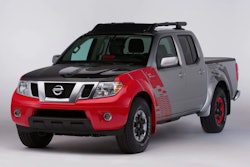
The same state that has fostered the largest EV roll-out in U.S. history is now up against a power crisis brought on by the same force it strives to protect: mother nature.
Seriously. Be careful about hugging a tree in California because it could very well be on fire.
I grew up in the Golden State amid threats of wildfires, earthquakes, mud slides, droughts, Santa Ana winds, air and water pollution. While debates rage on regarding man’s role in creating and then mitigating these crises, a real problem remains for the nascent EV industry there. Namely, how do you charge EVs when the power’s down?
For those that aren’t aware, the state’s largest utility—bankrupt Pacific Gas & Electric—has cut power to over 2.5 million customers in Northern California hoping to prevent wildfires. While those efforts may have helped, wildfires have flamed up nonetheless. And reports have emerged that it’s likely that fallen power lines in Northern and Southern California are to blame for current wildfires in those regions.
The deadly equation is simple: vast amounts of overhead power lines + strong, dry winds + drought conditions = downed power lines starting deadly fires in dry brush. PG&E has not been able to keep up with clearing 27,000 miles of its power line corridors where dry, overgrown brush and long tree limbs crowd the lines.
Those who have been taking notes will recall that Tesla is headquartered in Palo Alto, Calif. which is not far from the current Kincade fire raging in Sonoma county.
Lines of electric cars reminiscent of the fuel crisis in the 1970s have been forming at Tesla Superchargers in the area. Tesla CEO Elon Musk had advised EV owners on Twitter to power-up before the plug was pulled. One man’s solution, according to The Washington Post, was to buy two generators: one for his home and the other for his car. But that approach is akin to cheating on a diet. He’s still relying on internal combustion to get around.
Tweet czar Musk also announced that he would be getting battery-supported Tesla Powerpacks in place at Supercharger stations as fast as the permitting process would allow. Such backup systems can be powered by solar panels or windmills.
Also while California burns, Musk has been busy pushing Tesla’s solar products, such as the company’s latest solar roof tiles. Great. So as your home or business goes up in flames you can fantasize about rebuilding it with Tesla solar tiles.
Sorry, but it’s the equivalent of flinging a few cheeseburgers at a starving community. Those with deep enough pockets or credit at their disposal will probably get in line for additional Tesla products but it comes at a time when people are eagerly waiting now for a turn to power up their EVs while wildfires loom on the horizon. It’s just too little, too late. (Apparently moved by the crisis, Musk Tweeted this week, “If you’re directly affected by wildfire power outages, Tesla is reducing Solar+Powerwall prices by $1000 as of today.”)
@Tesla car waiting line up to 10 deep at supercharger Los Gatos as PGE announces outages... pic.twitter.com/VQvbQOdtPl
— Rod Beckstrom (@RodBeckstrom) October 9, 2019
It’s not just the EV haven in Northern California that’s up against charging challenges. Southern California Edison has thus far cut power to roughly 800 people, according to a report this morning in The Guardian, and is now considering cutting power to 400,000 more in the L.A. area where the Getty fire continues to spread.
These blackouts come at a time when the state continues to fund initiatives to motivate consumers and companies alike to buy low or emission-free vehicles. Just last week, the California Air Resources Board approved a $533 million plan to fund clean car rebates, zero-emission transit and school buses, clean trucks and other clean transportation and mobility pilot projects.
And here’s where it gets interesting. Bankrupt PG&E—again, the largest utility in the state—has said that it will probably be staging blackouts for the next 10 years to lower the risk of wildfires.
So CARB basically has thrown a drowning man an anchor by pushing for even more EV rollouts. This is where it gets even more interesting.
Don’t be surprised if the state acquires PG&E and other other utilities in the years ahead. Just yesterday, news broke that Governor Gavin Newsom is trying to convince Warren Buffet to buy PG&E. Also, the City of San Francisco has offered PG&E $2.5 billion for its power lines in the city.
Clearly, whoever ends up owning utilities in California, they’re going to have to make some big changes as power-hungry EVs continue to hit the street. Getting power lines underground is a very costly endeavor, but in a state that has a history of wildfires, high winds, earthquakes and landslides, it doesn’t look like they have much choice.














